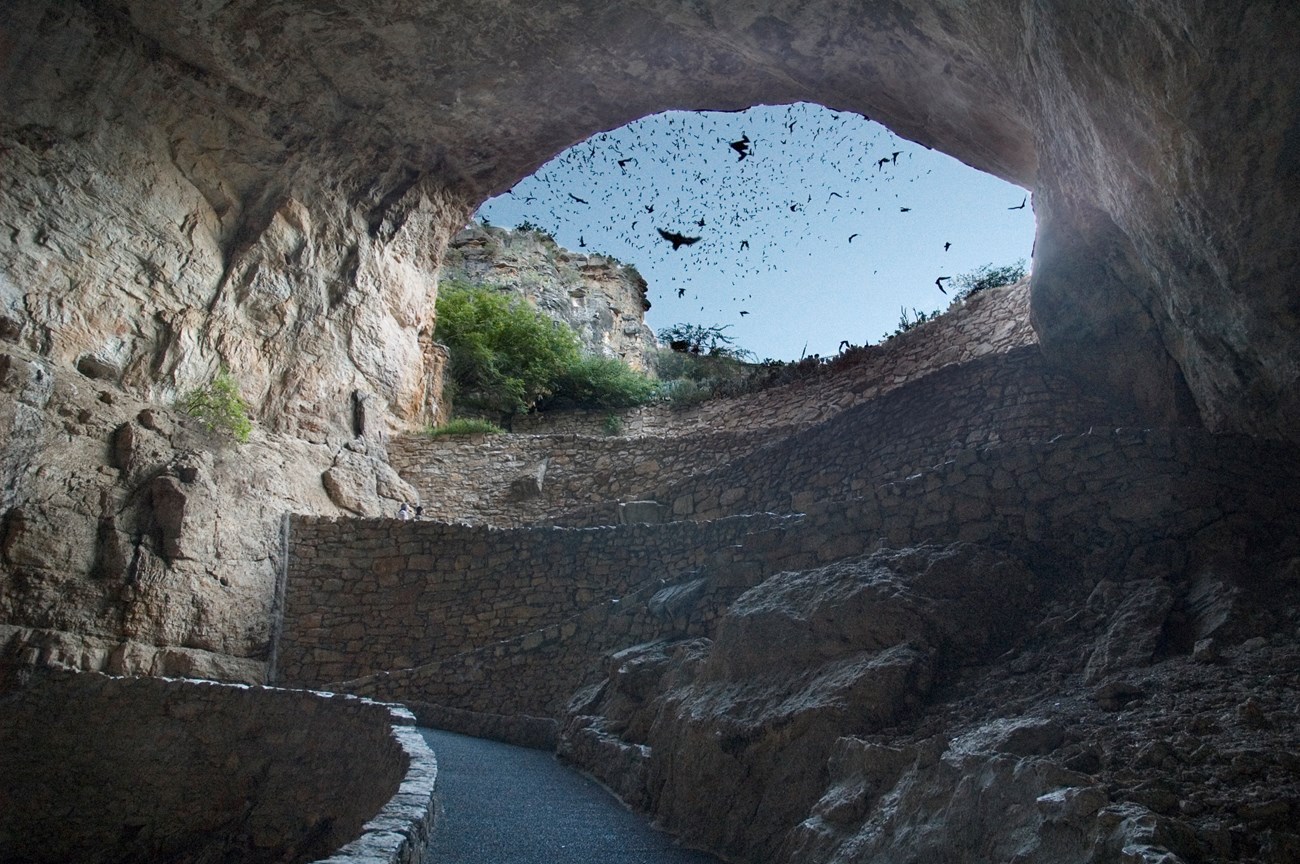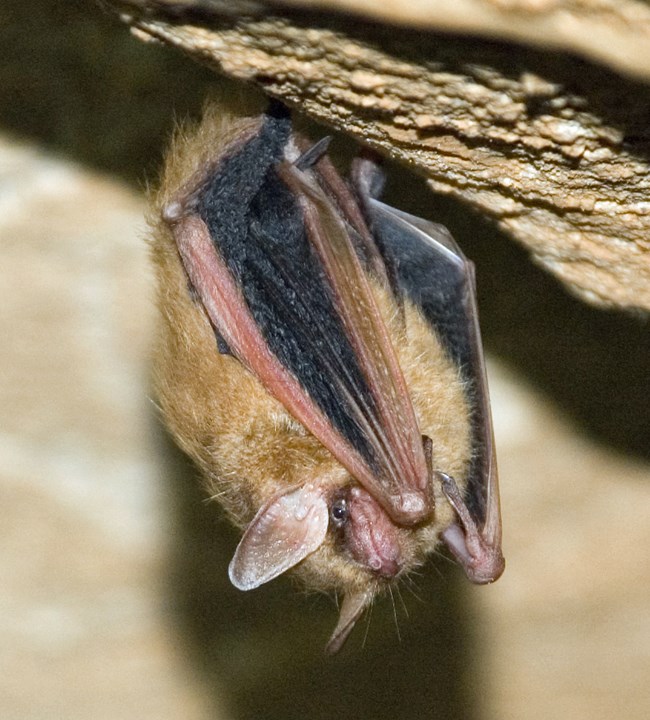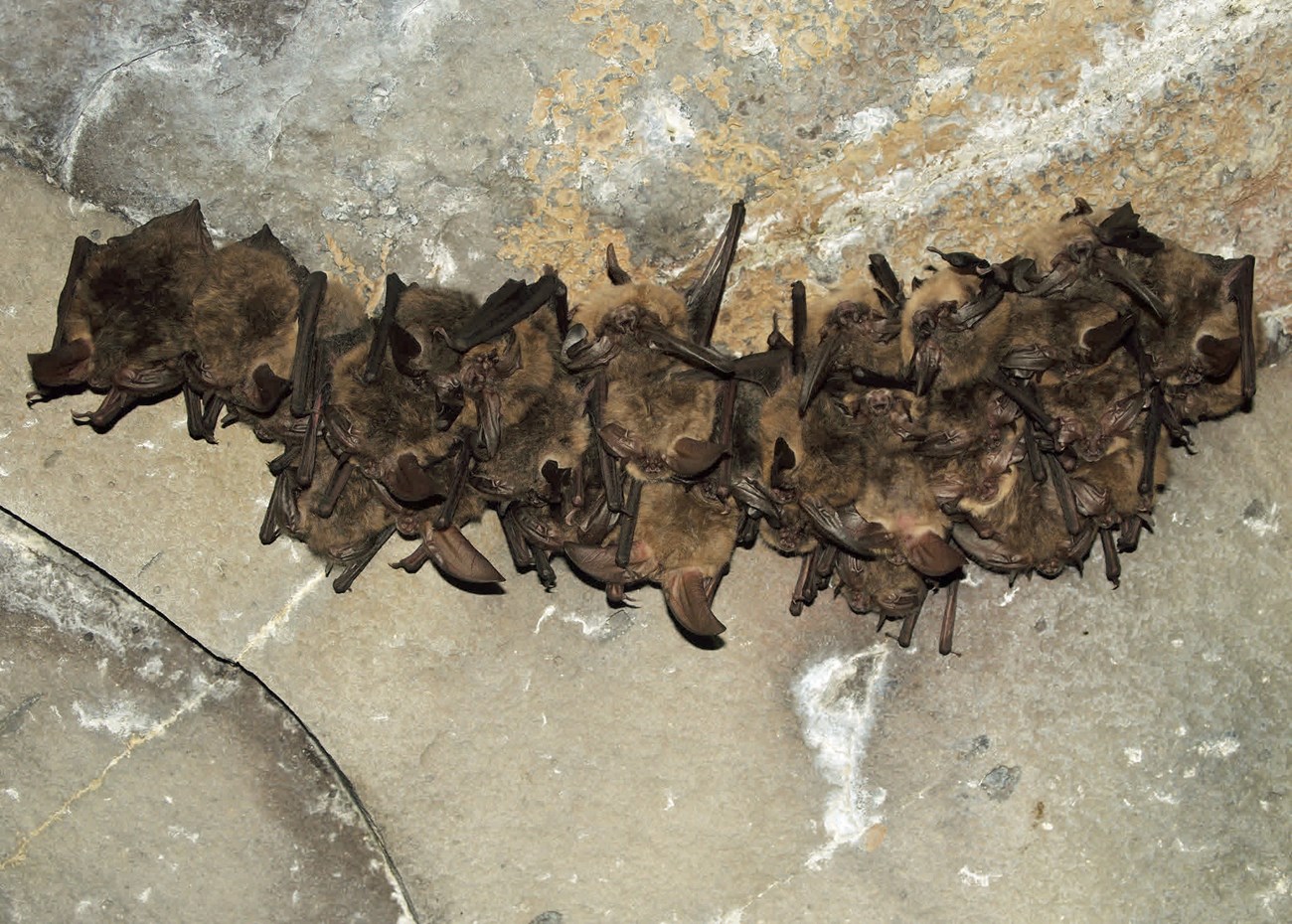Part of a series of articles titled Cave Week—Featured Articles.
Article
Bats in Caves

NPS photo.
Why do Bats Go Into Caves?
One of the animals people most associate with caves are bats. Bats are often pictured flying from cave entrances whether in a movie or in reality such as at Carlsbad Caverns National Park. But, most visitors to developed caves see only a few if any bats, even at Carlsbad Caverns. There are several reasons why. Bats are usually scared by bright lights and loud noises such as tours. They may avoid tour trails and caving routes. And in many caves, including Carlsbad, the tour route avoids the bats' favorite hang-outs, allowing the bats and cave visitors to all enjoy the cave in peace. It is also true that most caves might have at least a few bats, but only a few caves large huge numbers of the only flying mammals. Your tour cave just might not have that many bats living within it. Although, Carlsbad Caverns, Mammoth Cave, Jewel Cave, and many other National Park caves do have very important and large bat colonies.
Sometimes in the caves with the best conditions, large colonies of bats form during certain seasons. Bats have their favorite caves and even favorite cave rooms and that is where there are big numbers. Each season the bats may move to a different cave with a different set of living conditions or maybe a different food source nearby. Often only a few caves play an important role each year for a given population of bats. These favorite caves or cave rooms vary species by species.
What Makes a Good Bat "Hangout"?

NPS Photo by Dale Pate.
Some bats like warmer cave locations for having their babies in the spring, but cooler spots for hibernating during the winter months. In the summer and fall these same bats may call other caves home. Bats find the best cave locations that suite their needs. Once they do have a favorite spot many species settle in and come back year after year for hundreds or even thousands of years.
Some bats roost alone, others in groups but not necessarily close together. Some prefer the close company of their companions and snuggle-up. Some may roost near cave entrances, while others roost thousands of feet or hundreds of meters from the exit. The bats may fly through small holes or up and down deep pits to reach their roost. Some species will roost over water such as a cave stream or lake, while others appear to always sleep up above terra firma.
Bat Population Facts
The largest groups of mammals on Earth are bat colonies. The largest known colony is at Bracken Bat Cave near San Antonio, Texas where 20 million adults and pups live each summer. They feast on vast numbers of night-flying insects in the Texas skies. Watching bat flights in summer evenings in south-central Texas has become a thing to go and do. This is especially true at the Congress Avenue Bridge in Austin where 1.5 million bats live and hundreds of tourists watch the show each evening. The huge numbers of bats in this part of Texas can appear like dark clouds in the evening sunset.

NPS Photo by Shawn Thomas.
Diversity
Bats are a very diverse group of animals with more nearly 1,000 different kinds world wide and 45 in the US and our National Parks. Most of these different kinds of bats actually do not live inside of caves. Rather they make their homes in cracks in rocks, in the thick bark of big trees, in large leaves and other narrow, dark, protected locations.
Survival and Role in Nature
Unfortunately many bat species are declining in numbers. Disease, loss of habitat to agriculture, housing developments and mining, climate change impacts, disturbance in caves, insecticides that make their food poisonous have all played a part in reducing bat numbers. Bats play an important role in nature by eating lots of bugs and keeping their populations in check.

Why to do bats go into caves? To find shelter and a safe space to sleep and raise their young. But bats are a diverse bunch. Some do not go into caves at all and even the cave dwellers only call certain caves home. Bats are an important part of the natural world that we live within. They are also an important part of our National Parks whether it is in a cave or out in the forest.
Last updated: June 26, 2020
